This is a fun one today. At STH we cover a lot of server and workstation gear. Today, we get to look at what is in many ways a crossover. The Dell Precision 3930 is a 1U rackmount workstation that offers an Intel Xeon Processor, a NVIDIA Quadro GPU, and a lot of workstation features while being placed in a rackmount enclosure.
Dell Precision 3930 Hardware Overview
Since this is a rackmount workstation, it does not fit in our normal review methodology easily. It is a rackmount, meaning it is like a server. It also a workstation missing some of our server-style features like IPMI. As a result, we are going to do this one more in the spirit of our recent TinyMiniMicro reviews. This system is a workstation and we purchased it for not much more than we would a high-end TMM node. We also have a video for this that you can see here:
We suggest opening this in a new window, tab, or app for the best viewing experience.
The plan, as usual, is to go over the external hardware overview, followed by the internal hardware overview.
Dell Precision 3930 External Hardware Overview
Part of this system is clearly its form factor. The depth is not particularly short at 23.19” or 589.1mm, but it will fit into most edge racks and data centers. It even has a little service tag that says “Dell Precision 3930 Rack.”
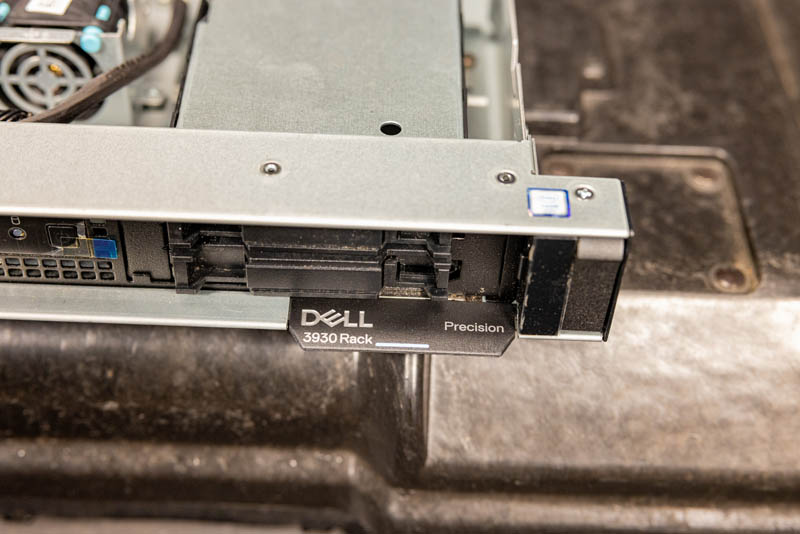
The front of the system will look a bit different from many servers. On either side of this 1U platform we have storage and in the middle we have I/O.
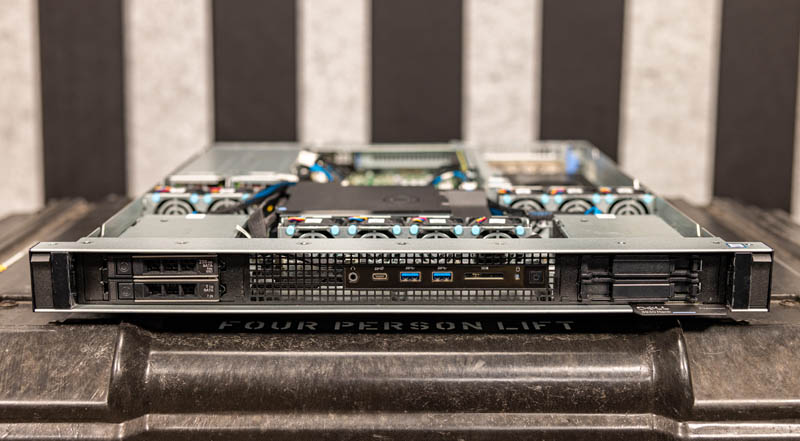
The middle I/O is really unique. There is an audio port, a USB Type-C (10Gbps) port, and two USB 3 5Gbps ports. Next to that though, we have a SD card slot. In the video we mentioned that we could take the SD card directly from the Canon C70 and put it into this SD card slot which is very different for a rackmount system we test these days.
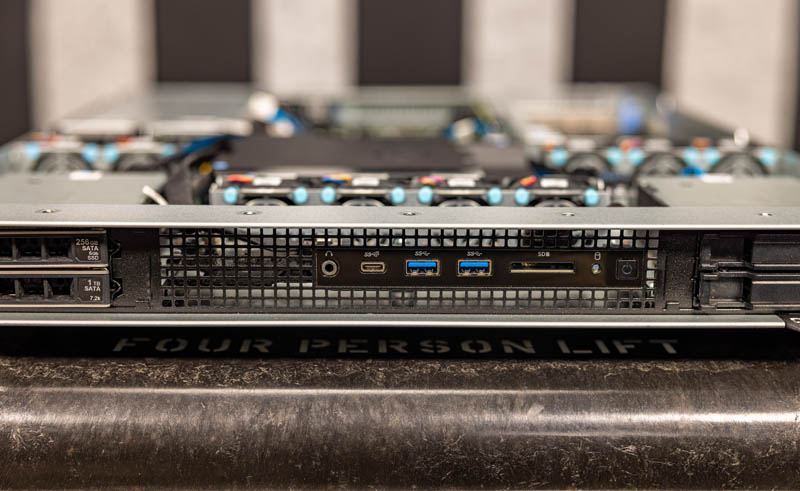
On each side, there are two storage bays. Our system is setup for both being 2.5″ bays, but one can see that on each side there is a space for a 3.5″ drive but we have two 2.5″ bays instead. We only have the left side populated, but we could put two more 2.5″ drives on the right side.
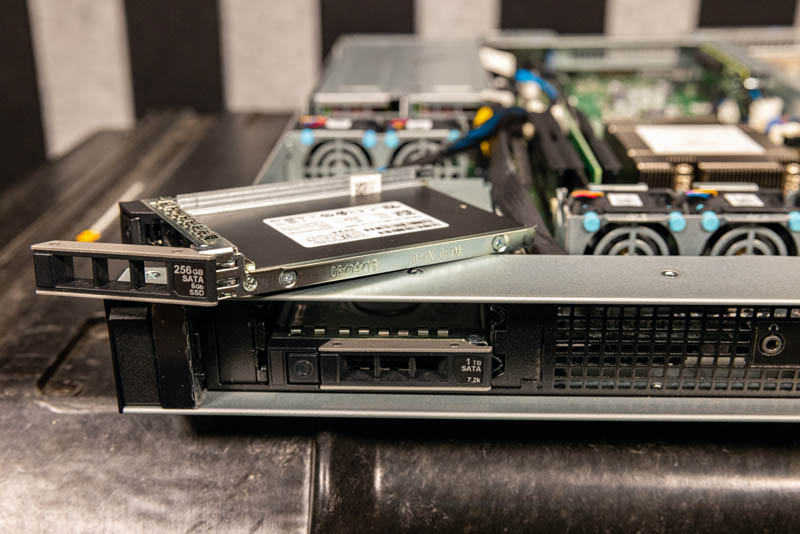
Our system came with a 256GB SATA SSD as well as a 1TB SATA HDD. One item we are not fond of is that Dell is still using old-fashioned screws here instead of tool-less trays. Most of the servers, now even the low-cost ones from small vendors, include tool-less 3.5″ and 2.5″ trays. This is mitigated by the fact that we have a 3-year on-site warranty, but it is still something we would like to see improved.
Now, let us move to the rear of the system.
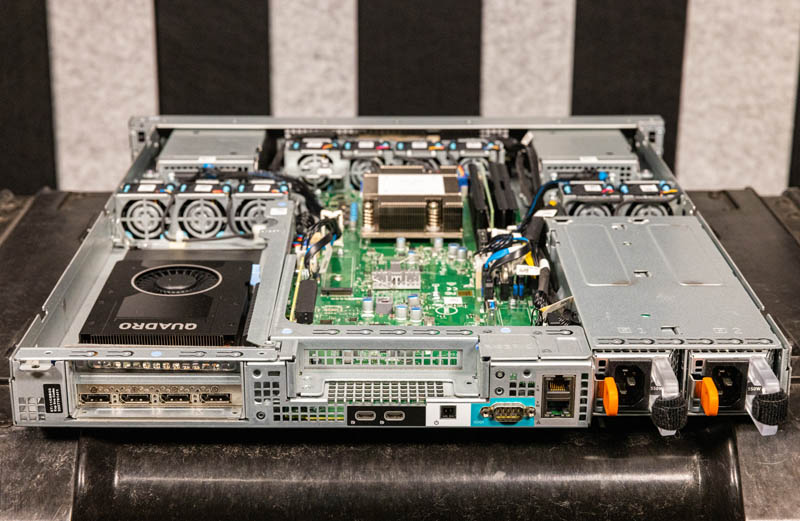
In general, one will notice that this looks a lot like it is a server in terms of layout.
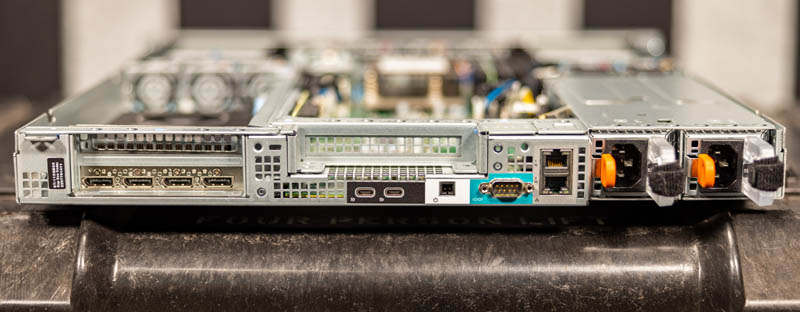
On the left side we have the expansion slots that are designed for either a single or two GPUs.
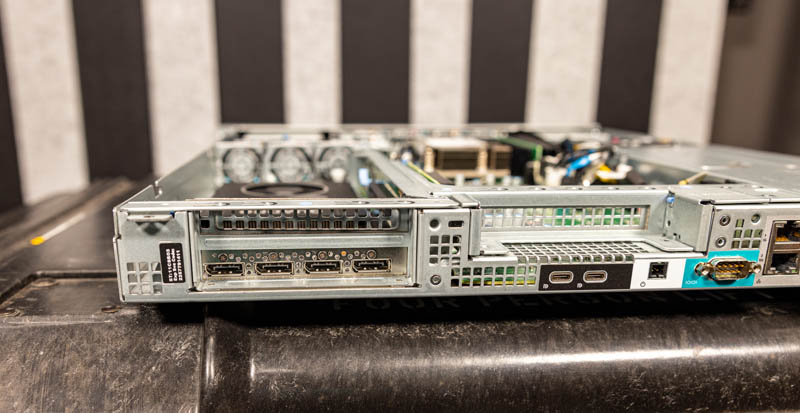
In the center, we get another riser card slot. Below that we have two Type-C ports that can be either USB or DisplayPort and are driven from the Intel CPU’s iGPU. We even get a power switch header and a serial port.
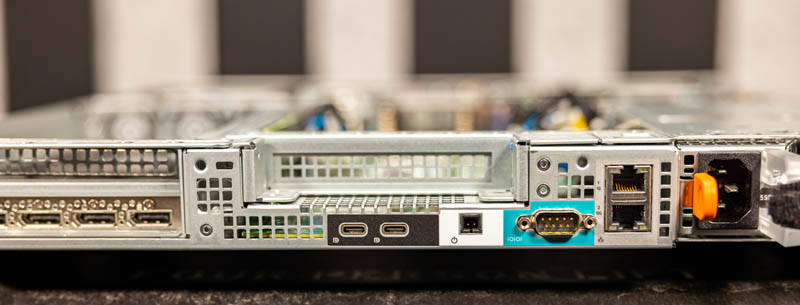
In terms of networking, this is something special. We get Intel i219-lm integrated chipset networking for 1GbE. For the second port, we get 10Gbase-T. This is great to allow the system to access local NAS or clustered storage at higher speeds without having to add an additional NIC.
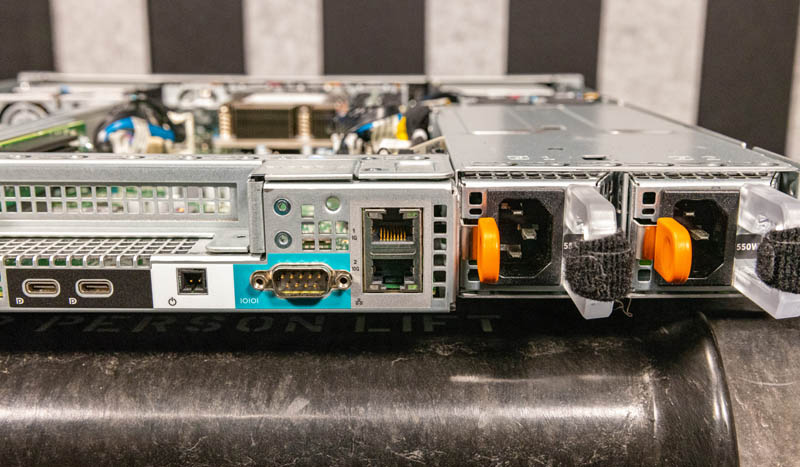
This 10GbE port is based on a Marvell/ Aquantia AQC107 NIC. This is not the highest-end solution, but it has a nice feature: it can run at 1GbE, 2.5GbE, and 5GbE speeds as well.
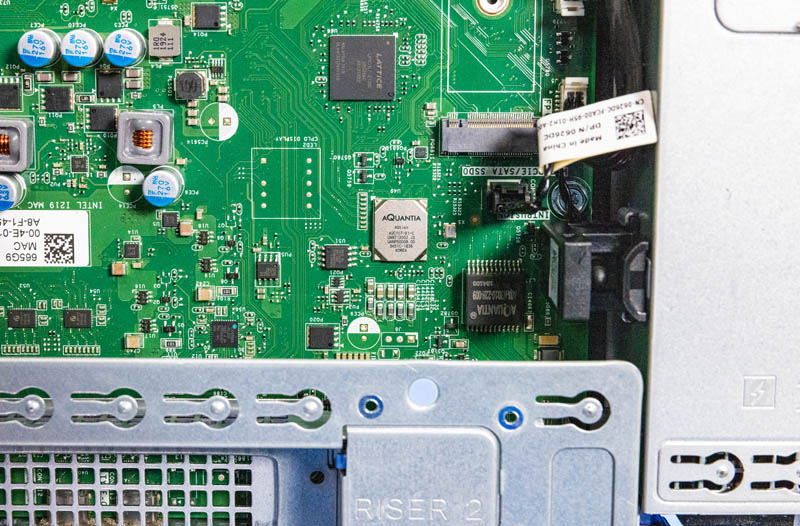
The power supplies for this unit are nice 550W 80Plus Platinum units. As a quick note, Dell also offers lower-end PSUs and single PSU options. PSU requirements vary by the GPU configuration.
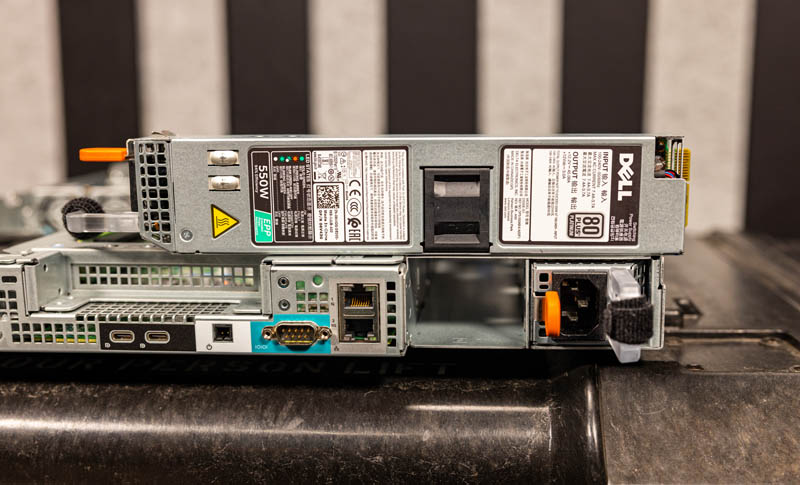
One small note before we get inside the chassis is that this system has a standard Dell service guide on the bottom of the lid. This is a nice touch that we like to point out.
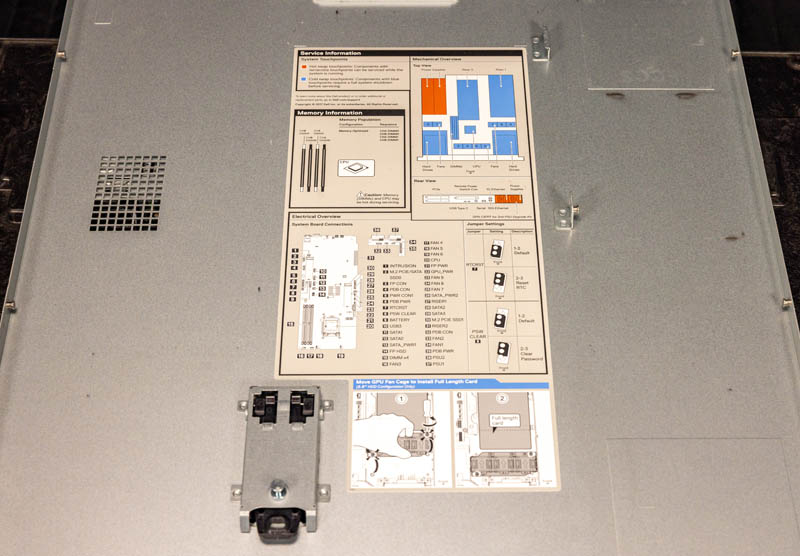
Next, we are going to get inside the system for our internal overview.

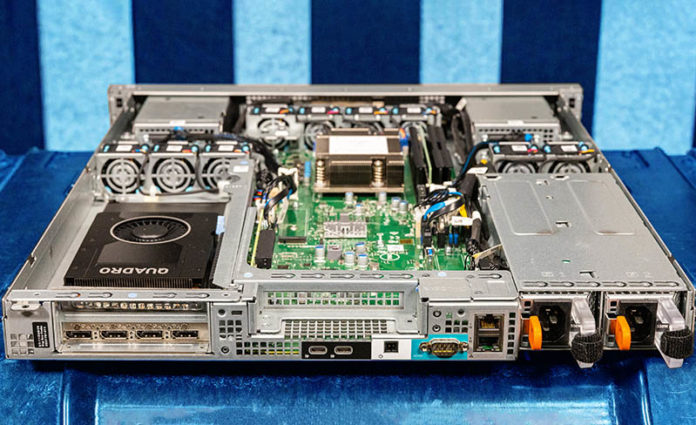
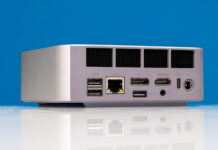
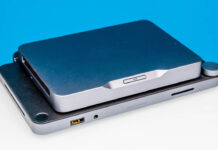
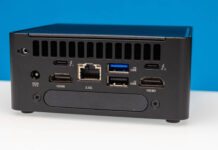
The Windows for Workstations tax is unacceptable. The vast majority of users for these workstations will never use any of the features. For those that do, they have easy access to the upgrade. Requiring users to purchase it when the system isn’t even equipped with RDMA NICs and doesn’t support PMem is ridiculous. ReFS is still a (cool) technical preview, and rarely — if ever — used in production.
Windows for Workstations is a valuable SKU for those that need it, but on these systems it leeches value from the solution and angers customers.
Dell: “The world’s most powerful 1U rack workstation.”
Processors: One 9th hem Core i3, i5, i7 and i9 or E-2200 family with up to 8 Cores OR
8th gen Core i3, i5 and i7 and Intel Xeon Processor E-2100 family of CPUs with up to 6 cores
I wish for a intel 12th gen worstation :(
I’m curious about what the plan is for the ports on this one.
It’s the sort of selection that one would want on a workstation/desktop; but a 1U fan array is very much not what you’d want on your desk.
The Supermicro system you compared it to seemed to have that in mind: basically just basic server management and NICs with the intention of being remotely accessed.
You certainly could do that with this one; but there would be a lot of ports just sort of sitting there; and while there are KVMs that will do extension of more than just a VGA port and a couple of USB HID things; getting a couple of displayport outs, some 5 or 10Gb USB and the like extended would be exotic and expensive; and if you are just going to VDI in that’s a lot of bezel that would have been better off as vents or extra drive bays or something.
@fuzzy, I agree – although this is a cool system, I’m struggling to figure out who buys it. No way do I want a rack next to my desk, and most IT shops don’t just allow users to wander into the server room (or access a rack in a closet) and start plugging USB drives and SD cards into devices. Still scratching my head trying to picture who buys this and why. Whoever it is, that niche customer is probably part of the reason they’re relatively inexpensive used (“refurbished”) units… Can anyone think of a use case for this strange computer?
What a deal at “just over $1000.00”.
It would be a lot more appealing in 2U, my office isn’t that cramped that I want to surround myself with 40mm banshees, err, fans.
Is there a reason you wouldn’t just treat this as a remote workhorse and just RDP into it? The video card etc still does the lifting but you could put a raspberry pi on your desk if you wanted to and still effectively have the same workstation performance.